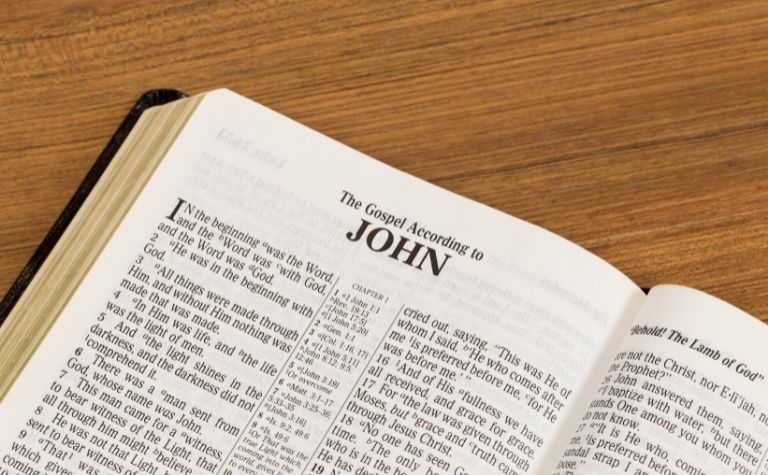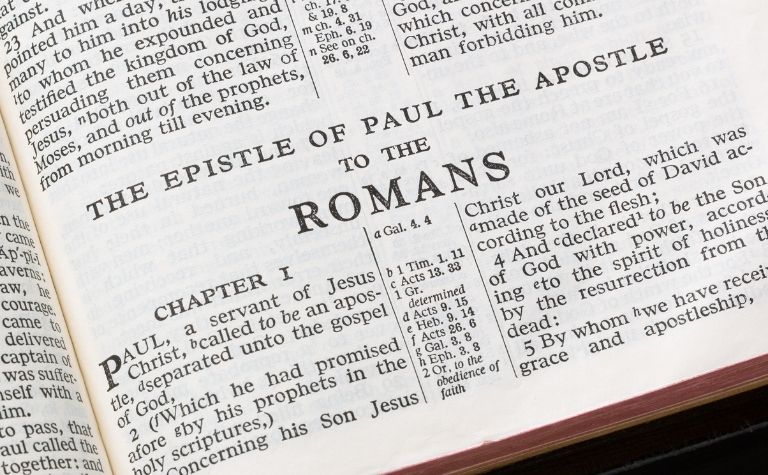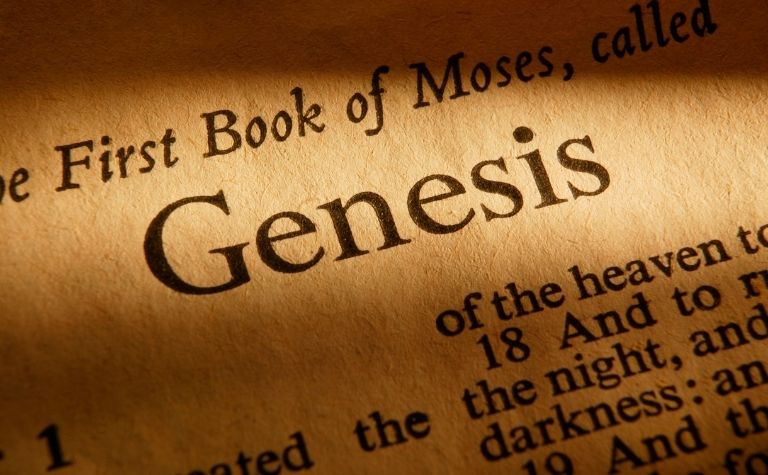Regular Bible reading is a valuable habit, as Scripture is God’s message to people. However, the Bible’s 66 distinct books, featuring various authors, settings, and themes, can make it challenging for newcomers to decide on a reading order. It is advisable to start with the Gospels, as they are the biographies of Jesus Christ. Follow these with Acts, James, 1 John, and Paul’s letters, then proceed with the rest of the New Testament. In the Old Testament, begin with Genesis, Psalms, and Daniel.
When people begin reading a book, they usually start on the first page where the story begins. Although Genesis introduces the Bible’s narrative, the core message of Scripture centers on the life and ministry of Jesus Christ, making the New Testament an ideal starting point. Moreover, understanding the Old Testament becomes easier once readers are familiar with the New Testament teachings, which illuminate Old Testament prophecies and foreshadowing of Jesus’ coming. The New Testament details Jesus’ birth, death, resurrection, and the events of his life, providing essential context for the entire Bible.

Starting with the Gospels
The best place to start reading the Bible is with the Gospels — Matthew, Mark, Luke, and John — because they are eye-witness accounts of the life and teachings of Jesus (e.g., Luke 1:2). Because they are biographies of the same person, they contain overlapping stories, but each Gospel also has unique characteristics as well. John is a great Gospel to start with because it’s the easiest to understand. After John, the suggested reading order is Mark, which is the shortest Gospel, followed by Matthew and Luke.
Reading the Gospels in any order will help people understand Jesus better. It’s not necessarily the order in which they are read but a person’s devotion to understanding and applying the teaching in the Gospels that is edifying and life-changing. A helpful tool for readers is called a Harmony of the Gospels, which is a resource that lists the passages of Matthew, Mark, Luke, and John in chronological order. (See the Harmony of the Gospels on the Blue Letter Bible for an example.)
Reading the Book of Acts
Acts is a great choice to read after the Gospels because it’s a continuation of the same narrative. Luke is the author of Acts, and he intended it to be a sequel to the Gospel of Luke. The four Gospels end similarly with Jesus’ resurrection. Acts begins with the disciples interacting with the resurrected Christ before his ascension into heaven and the sending of the Holy Spirit to earth.
Reading James and 1 John
The New Testament contains different literary styles or genres, like biography (see above). Yet, the genre found most in the New Testament is epistle or letter. As the term suggests, letters are written correspondences from one person (an Apostle) to other believers, like an individual or church. James and 1 John (not to be confused with the Gospel of John) are great books to read after the Gospels and Acts because they are short, easy to understand, and contain memorable teachings.
- In James, readers will learn about faith and works, resisting the devil, and the power of prayer.
- In 1 John, readers will learn about walking in the light, not loving the world, and testing the spirits.

Reading Paul’s Letters
Paul, an early convert and missionary in the Christian church, wrote 13 of the 27 books in the New Testament. His writings contain some of the most famous passages ever written (e.g., 1 Corinthians 13), but some who are new to Bible reading may find some of his teachings difficult to understand at first. Thankfully, reading them gets easier with a little time, practice, and perhaps a Study Bible (more below). Paul’s Letters in the New Testament are organized according to size. In order, they are:
- Romans
- 1 Corinthians
- 2 Corinthians
- Galatians
- Ephesians
- Philippians
- Colossians
- 1 Thessalonians
- 2 Thessalonians
- 1 Timothy
- 2 Timothy
- Titus
- Philemon
It is wise to read Paul’s Letters in the order they appear because Romans is so important to Christian beliefs. However, if a person desired a suggested reading order based on which ones are easiest to understand, the recommendation would be Ephesians, Philippians, Colossians, Philemon, 1-2 Thessalonians, 1-2 Timothy and Titus, 1-2 Corinthians, Romans, and then Galatians.
The rest of the New Testament
After Paul’s Letters, people should read Hebrews to Revelation, minus James and 1 John, because they appear earlier in the suggested reading order list. A person can read these books in order. However, a suggested reading order based on the books that are easiest to read would be Jude, 2 and 3 John, Hebrews, 1 and 2 Peter, and then Revelation.
- Hebrews
- James (see above)
- 1 Peter
- 2 Peter
- 1 John (see above)
- 2 John
- 3 John
- Jude
- Revelation
Study Bibles are a great resource for people who are new to reading Scripture. They are Bibles that contain explanations of verses on every page, as well as maps, charts, and pictures. Recommendations below.

Suggested Reading Order of Old Testament Books
By starting with the three books below, readers will grow in their understanding of God’s creation of the world, sin’s invasion of it, people’s struggles as a result of it, and God’s plan to redeem and overcome it.
- Genesis: Though Genesis is one of the longest books in the Bible, readers love its stories. The first quarter of the book teaches about the origins of the universe, Earth, people, families, work, and sin. The remaining portion of the book tells readers about the origins of the nation of Israel.
- Psalms: Many Bible readers consider Psalms one of their favorite books because of the beauty of its descriptions and the way it speaks for people who long for God, struggle with sin, and live life in a world infected with sin.
- Daniel: The Old Testament prophet Daniel is a shining example of faithfulness to God. Readers love the stories about Daniel risking it all to stand up for his faith and to survive being eaten by lions because of God’s intervention.
The Old Testament contains 39 books, three of which are suggested above. A person can read the remaining books in order. If some want a suggested order based on ease of reading, then the recommendation is below. Please note that the order is just a recommendation. It may be best to use it as a starting point for considering what books to read and study.
- Proverbs
- Exodus
- Joshua
- Judges
- Ruth
- Jonah
- 1 and 2 Samuel
- 1 and 2 Kings
- Ezra
- Nehemiah
- Esther
- Job
- Ecclesiastes
- Song of Solomon
- Isaiah
- Jeremiah
- Lamentations
- Leviticus
- Numbers
- Deuteronomy
- 1-2 Chronicles
- Ezekiel
- 12 Minor Prophets (Hosea-Malachi, minus Jonah)
What is a Study Bible?
Study Bibles are excellent resources that new Bible readers should strongly consider. Study Bibles contain explanatory notes to help people understand what they are reading. They commonly include maps, charts, timelines, and pictures. Every major English translation has a Study Bible, and most have multiple options. Recommendations include:
- The NIV Study Bible (thousands of notes; full-color pictures, maps, etc.)
- The ESV Study Bible (thousands of notes, dozens of articles, fewer pictures)
- The NLT Study Bible (thousands of notes, incredible visual aids)
Related Questions
The Book of Enoch has fascinated historians, theologians, and other interested readers for over two millennia. Some call it "1 Enoch," as there are other ancient writings named after the patriarch....
The Roman Catholic Church is in agreement with Protestant churches on several important doctrines and practices, like the Trinity, the fall of humanity into sin, and the deity of Jesus Christ. One...
